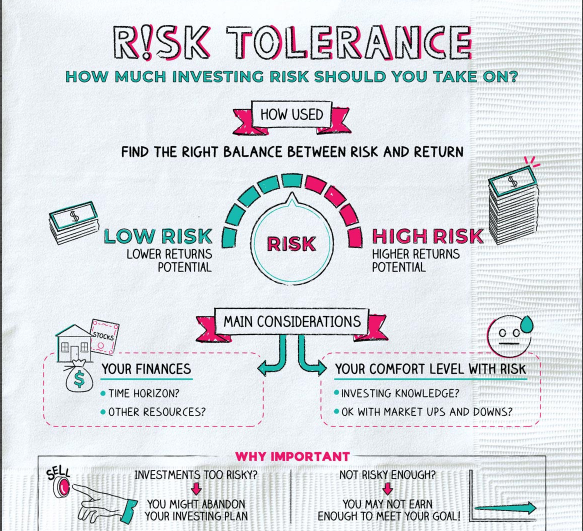Understanding Risk Tolerance: How Much Should You Really Invest
When it comes to investing, one of the most important questions you can ask yourself isn’t “What should I invest in?” but “How much risk am I comfortable taking?”
This is called risk patience and understanding it can mean the difference between sleeping soundly at night and panicking every time the market dips.
What Is Risk Tolerance?
Risk tolerance is your personal comfort level with the ups and downs of investing. It’s shaped by:
-
Financial situation – How much money you can afford to lose without affecting your lifestyle.
-
Time horizon – How long you plan to keep your money invested.
-
Personality – Whether you tend to stay calm or get anxious when markets fluctuate.
Why Risk Tolerance Matters
If your investments are too risky for your comfort level, you might sell at the worst possible time locking in losses. On the flip side, if you play it too safe, you could miss out on growth and fall short of your financial goals.
The goal is to strike a balance: enough risk to grow your money, but not so much that you can’t handle the volatility.
How to Figure Out Your Risk Patience
1. Ask Yourself “What If?”
-
How would you feel if your investments dropped 20% overnight?
-
Would you see it as a buying opportunity or a disaster?
2. Use a Risk Tolerance Questionnaire
Many brokers and financial planners offer quizzes to help you measure your comfort level. These usually consider your age, goals, and emotional reactions to market swings.
3. Consider Your Time Horizon
-
Short-term goals (0–3 years) → Keep money in low-risk investments like savings accounts or bonds.
-
Long-term goals (10+ years) → You can usually afford to take on more risk, since you have time to recover from downturns.
4. Factor in Your Financial Cushion
If you have a strong emergency fund and little debt, you can generally handle more investment risk.
Matching Investments to Risk Tolerance
-
Low risk tolerance: Government bonds, high-yield savings accounts, certificates of deposit (CDs)
-
Moderate risk tolerance: Balanced mutual funds, index funds, blue-chip stocks
-
High risk tolerance: Growth stocks, sector ETFs, small-cap companies, alternative assets
The Bottom Line
Understanding your risk tolerance isn’t about avoiding risk—it’s about taking the right amount for you. When your investments align with your comfort level, you’re more likely to stay the course, ride out market swings, and reach your long-term goals.
Remember: The best investment strategy is the one you can stick with through both good and bad times.


